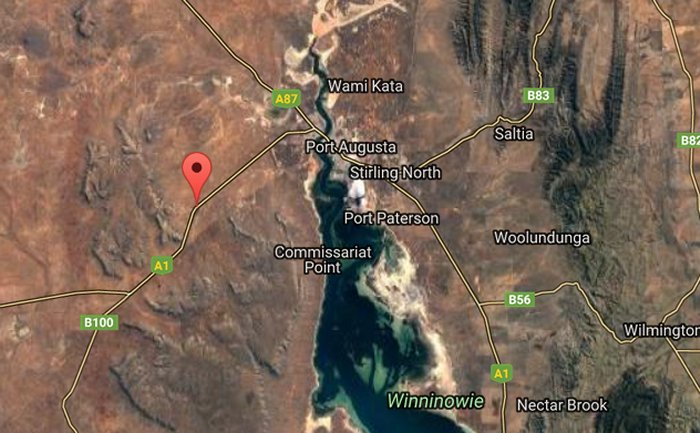
Image: Google Earth
Australia’s Clean Energy Finance Corporation announced this morning it will be supporting Australia’s first unsubsidised large-scale grid-connected battery.
The CEFC will be providing $150 million in debt finance to stage one of the Lincoln Gap wind farm in South Australia’s Port Augusta region, which includes a 10MW/10MWh battery energy storage system.
“This is the first development project in Australia which has been able to secure debt finance for a grid-connected large-scale battery component on a non-subsidised basis,” said CEFC wind sector lead Andrew Gardner. “It provides an important financing model for other developers and investors wanting to be at the forefront of closer integration of renewables into the grid.”
Stage One of the Lincoln Gap wind farm project is a $300 million, 126MW development. When fully completed, the 212MW wind facility will generate enough electricity to power the equivalent of around 155,000 homes and avoid more than 600,000 tonnes of carbon dioxide emissions every year. The battery system is to be upgraded up to 30MW in the future.
Situated 15km to the west of Port Augusta, Lincoln Gap has been in the works for a long time – development approval was originally granted in 2006. Approval for up to 59 turbines has been given and developer Nexif Energy Australia has selected 3.6MW Senvion wind turbines for the project.
The construction phase will see 110 to 130 people employed and commissioning of the wind farm is expected in late 2018.
The Lincoln Gap investment follows the CEFC’s recent $94 million investment in Australia’s first fully integrated wind, solar power and battery project, Kennedy Energy Park in Queensland. That facility will be the first wind, solar and storage hybrid generator in Australian connected to the NEM via a single connection point.
“We expect investors will be increasingly attracted to such large-scale hybrid renewable energy projects as the next wave of investment and technological innovation,” said Mr. Gardner.
Other major large-scale battery projects currently under way in South Australia include the 100MW/129MWh Tesla Powerpack 2 project near Jamestown (more than 80% complete as of early November) and a 30 MW installation at ElectraNet’s Dalrymple substation on South Australia’s Yorke Peninsula.
“Together, these projects will provide a significant amount of frequency response services to the South Australian grid,” states the CEFC.
According to the CEFC’s recently released Annual Report 2016-17, the Corporation achieved a significant increase in activity in 2016-17, delivering more than $2 billion in new commitments to 35 individual projects collectively valued at $6.5 billion.
The Clean Energy Finance Corporation’s investments are not “free money” – it expects to deliver positive returns to taxpayers on projects it supports.

 RSS - Posts
RSS - Posts



Looks like the renewable energy industry don’t think Turnbulls NEG is going to get up.